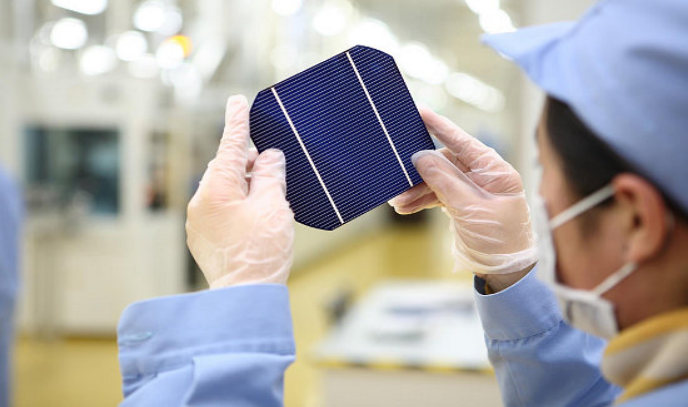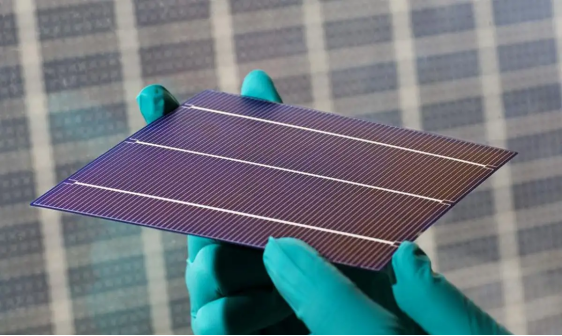
Quantum Efficiency Tester
PL/EL Integrated System
PV-Reflectumeter
3D Confocal Microscope
In-Line Four Point Probe Tester
Four Point Probe Tester
In-Line Thin Film Thickness Tester
Raman Spectrometer
FTIR Spectrometer
Spectrophotometer
Automatic Spectroscopic Ellipsometer
Contact Resistance Tester
Ultra depth of field 3D microscope
Auto Visual Tester
VMM PV Vision Measuring Machine
Solar Cell Horizontal Tensile Tester
Steady State Solar Simulator for Solar Cell
Solar Cell UV Aging Test Chamber
Solar Cell Comprehensive Tensile Tester
Visual Inspection Tester
Wet Leakage Current Tester
PV Module EL Tester
PV Module UV Preconditioning Chamber
Steady State Solar Simulator for PV Module
Current Continuous Monitor
Potential Induced Degradation Test
Bypass Diode Tester
LeTID Test System
Reverse Current Overload Tester
Impulse Voltage Tester
Hipot Insulation Tester
Ground Continuity Tester
Hipot Insulation Ground Tester
Damp Heat Test Chamber
Humidity Freeze Test
Thermal Cycle Test Chamber
Dynamic Mechanical Load Tester
Static Mechanical Load Tester
Hail Impact Tester
Robustness of Termination Tester
Module Breakage Tester
Cut Susceptibility Tester
Peel Shear Strength Tester
Universal Testing Machine (Single-arm)
Universal Testing Machine (Double-arm)
Glass Transmittance Tester
Acetic Acid Test Chamber
EVA Degree of Crosslinking Test System
Junction Box Comprehensive Tester
Drop ball tester
Semi-automatic scanning four-probe tester
Stylus Profilometer
Maximum Power Point Tracker
Perovskite Glass Transmittance Tester
Perovskite P1 Laser Scribing Multifunctional Testing Machine
Perovskite Online PL Tester
Perovskite Online Sheet Resistance Tester
Online Perovskite Film Thickness Tester
Perovskite Process Inspection Workstation
Portable IV Curve Tester
Portable EL Tester
Portable Thermal Imaging Tester
Solar Module Multi-Channel Testing System
PV Inverter Power Quality Tester
Drone EL Tester
IV Tester
IVEL Cell Sorting Machine
Important Factors Affecting Contact Resistance
Date : 2023-12-26Views : 190
In the performance of solar cells, the size of the contact resistance depends on the material and shape of the electrode, as well as the thickness, concentration and distribution of the doped layer and other factors. However, after these factors affect the contact resistance, there is no way to accurately self-characterize it. Which affects the performance parameters. In order to accurately characterize such parameters, Millennial Solar produced the TLM Contact Resistance Tester, which can accurately characterize and quickly detect, and perform objective interpretation of contact resistance performance through graphical display. Cell manufacturers can effectively adjust solar cells that have completed the diffusion, sintering, and electrode manufacturing processes based on the obtained performance parameters, so that they can be put into use correctly!

![]()
Effect of diffusion process on contact resistance
Thickness of the doped layer: The thickness of the doped layer refers to the distance from the surface of the solar cell to the point where the doping concentration decreases by a certain value, which reflects the concentration of the doped layer. Generally, the higher the concentration of the doped layer, the smaller the contact resistance, because a high concentration of doped layer can reduce the resistivity of the solar cell, increase the current density between the electrode and the solar cell, and reduce the resistance. In the diffusion process of solar cells, diffusion temperature and time are the main factors affecting the thickness of the doped layer. The higher the diffusion temperature, the longer the diffusion time, resulting in an increase in the thickness of the doped layer.
Concentration of doped layer: The concentration of doped layer refers to the ratio of the number of doped atoms on the surface of the solar cell to the number of solar cell atoms. It reflects the degree of doping of the doped layer. Generally speaking, the higher the concentration of the doped layer, the smaller the contact resistance. Similar to the impact of the thickness of the doped layer on the contact resistance, a high-concentration doped layer can reduce the resistivity of the solar cell, thereby increasing the connection between the electrode and the solar cell. Current density between, reducing resistance. In the diffusion process, the type and concentration of the diffusion source are the main factors affecting the concentration of the doping layer. The higher the type and concentration of the diffusion source, the higher the concentration of the doping layer.
Distribution of the doped layer: The distribution of the doped layer refers to the uniformity of the doped layer on the surface of the solar cell. This uniformity reflects the quality of the doped layer. The more uniform the distribution of the doped layer, the smaller the contact resistance will be, because a uniform doped layer can avoid local current concentration and thermal effects, ensure the consistency of the current density between the electrode and the solar cell, and reduce the resistance. In the diffusion process, the flow and pressure of the diffusion atmosphere, as well as the surface quality and arrangement of the silicon wafer, are the main factors that affect the distribution of the doping layer. The more appropriate the flow and pressure of the diffusion atmosphere, the better the surface quality and arrangement of the silicon wafer. Standard, the distribution of the doped layer will be more uniform, thus affecting the contact resistance.

![]()
TLM Contact Resistance Tester
Most of the factors that affect the contact resistance of solar cells in the diffusion process are caused by the doping layer. However, in order to accurately judge the degree of influence based on this influencing factor, it must be measured through solar cell performance testing equipment that specifically measures contact resistance. To make measurements, Millennial Solar produces the TLM Contact Resistance Tester for this purpose.
![]()

E-mail:market@millennialsolar.cn
In solar cell electrode optimization, contact resistance is an important aspect that needs to be considered. The size of the contact resistance is not only related to the contact image, but also related to the diffusion process and sintering process. Using the TLM Contact Resistance Tester produced by Millennial Solar to measure contact resistivity can reflect problems in diffusion, electrode production, sintering and other processes. And the contact resistivity test and line resistance test provided by this equipment can be switched at will.
● The measurement range can reach 0.1~120mΩ*cm^2;
● Static test repeatability ≤1%, dynamic test repeatability ≤3%
● Line resistance measurement accuracy can reach 5% or 0.1Ω/cm
● Contact resistivity test and line resistance test can be switched at will
● A variety of probe heads can be customized for measurement and analysis
Among the performance factors of solar cells, contact resistance is a very important and critical factor, which determines whether the solar cell can achieve maximum efficiency in practical applications. In order to evaluate the contact resistance and determine whether it can be put into use, TLM Contact Resistance Tester can be used to test it, thereby helping cell manufacturers make scientific judgments and effectively adjust and rationally apply solar cells, and help them produce efficiently!

































































